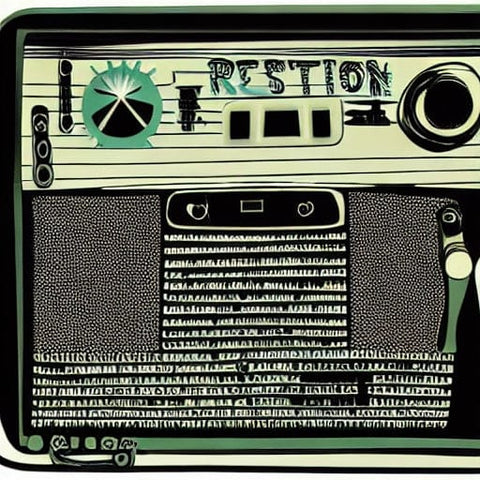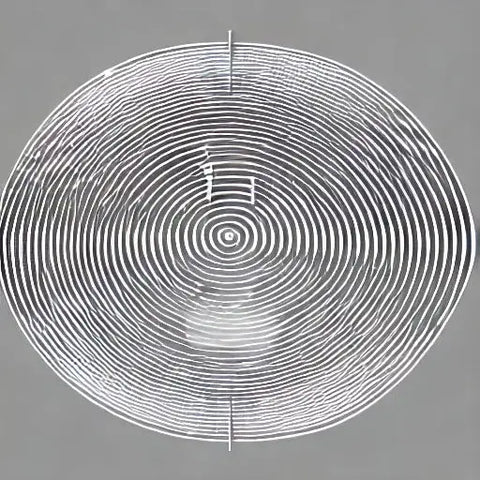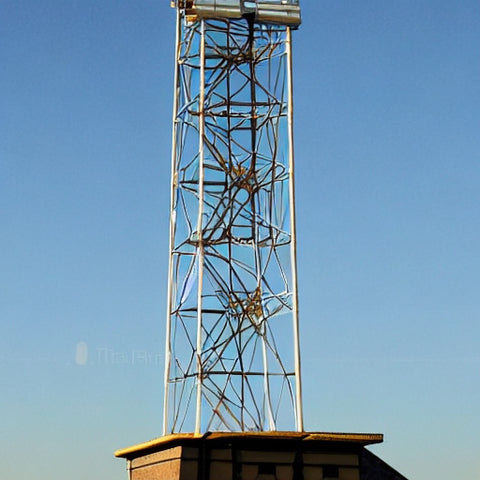What Exactly Are Radio Waves, Anyway?
The kind of radiation known as electromagnetic radiation includes radio waves. Within the range of the electromagnetic spectrum, their wavelengths are the most extensive. Radio waves at a frequency of 30 Hz have, for instance, a wavelength of 10,000 kilometers when measured.
The following is a list of important information about radio waves:
- Radio waves are a kind of electromagnetic radiation that may have wavelengths ranging from around one millimeter to one hundred kilometers (0.04 inches to 62 miles).
- The wavelengths of radio waves are the longest, and their frequencies and energy are the lowest, among all the many forms of electromagnetic radiation.
- Radio waves are used in a wide variety of communication and navigation applications, such as radio and television broadcasting, communication through mobile phones and other wireless devices, transmission of satellite signals, and navigation using global positioning systems (GPS).
- Movement of electrically charged particles, such as electrons, is what gives rise to the production of radio waves.
- Radio waves may be sent by wires and cables or over the air in order to reach their destination.
- Radio waves are able to travel through many different types of materials, although they are impeded or absorbed by others, such as metal and water. Radio waves can travel through many different types of materials.
Radically Limited Radio Waves
Radio waves are used in the transmission of short wave radio transmissions, which is a kind of communication. This is a gadget that is capable of sending messages across considerable distances. It is also utilized for communication in times of emergency. The primary use of short waves is in the field of worldwide broadcasting.
There are a variety of applications that may benefit greatly from short radio waves. They will assist you in communicating with other individuals as well as ships. Utilizing a short wave radio is a very time-efficient option. These gadgets are not only incredibly useful, but they are also quite affordable and simple to operate.
One of the advantages of short wave radio is that it enables listeners to tune in to any kind of program that is being sent from any location in the globe. You may even connect to a broadcast coming from the nation in where you are physically located.

However, utilizing a short-wave radio comes with a few drawbacks that you should be aware of. To begin, it may be challenging to see them in the first place. Second, there is the possibility that you may have to contend with illegal stations and a congested frequency band. Thirdly, it is difficult to monitor and exercise control over them.
The hours just before dusk and just after dawn are ideal for listening to short wave radio. A short wave may or may not be able to pass through clouds and vegetation, and this ability is highly dependent on the area. In the midst of a snowfall, the beam will get dispersed.
In spite of the fact that it has several drawbacks, it is a very useful instrument to carry about in your pocket. It is not only useful, but it also has the potential to be enjoyable. A short wave radio, for instance, may be used to operate a toy that is controlled by a remote control.
At the beginning of the 20th century, people were able to connect to broadcasts from all over the world via the use of short wave radios. People are also able to listen to the news from their area on these devices.
Short-wave radio is often regarded as one of the most efficient modes of modern communication. Although there has been significant progress made in this technology, there are still certain drawbacks.
When it comes to mobile communication, a short wave radio is another useful instrument. You are able to communicate with members of your family who live in various regions of the nation or even the globe by using short waves. It is advised that you make the investment in a receiver for your short wave radio if you want to get the most out of the device. You may listen to all of your preferred music, movies, and news stations if you have a short wave radio. This kind of radio is quite portable.
Radio waves operating at high frequencies
Radio waves with a high frequency, also known as HF waves, are a kind of electromagnetic radiation that may be transmitted through the air, along the surface of the Earth, and even into space. These waves are made up of charged particles that move at speeds that are very near to those of light. Lightning and other naturally occurring phenomena in the atmosphere of the Earth are the sources of these particles. On the other hand, they may also be generated by technology related to telecommunications.
Electric currents that move in a circular pattern via a conductor made of metal are what give rise to radio frequency waves. These currents cause the production of very minute oscillating currents, which may be picked up by receivers.
When a radio wave with a high frequency hits the brain, it has the potential to change the electrical activity of the brain's neurons. This is something that has been seen in both animals and people. A wide range of neuronal activities may be altered, depending on the nature of the exposure and how long it was sustained. Changes have been seen in a number of cellular components, including DNA, antioxidant enzymes, and the cell membrane.

The influence of high-frequency radio waves is dependent on the particular absorption rate of the medium. The amount of radiofrequency radiation that is absorbed by the body is measured in watts per kilogram. It is dependent on the strength of the radiation as well as the length of time that one is exposed to it. After just a brief exposure to RFW, there is, according to the findings of certain studies, a shift in the concentration of the transmitter receptors. It is possible that the influence of the radiofrequency on the nervous system will be amplified if the length of the exposure or the intensity of the exposure is increased.
Ionizing and non-ionizing radio waves are the two categories that high-frequency radio waves fall into. Ionizing radiowaves have the potential to disrupt chemical bonds when they are exposed to a subject. Radiowaves that do not ionize the environment may nonetheless change DNA and impact the metabolism of cells.
According to the findings of many pieces of research, the reaction of the nervous system to RFW is a dynamic process that varies based on the length of exposure, the frequency, and the modulation. Alterations in the electrophysiology of the brain have also been linked to factors like the length of the exposure as well as the intensity of it.
Several investigations have shown that the phosphorylation of the subunits of the N-methyl-d-aspartate receptors (NMDARs) at the postsynaptic membranes undergoes changes. Chronic exposure to RFW has been linked to lower levels of glutathione peroxidase activity as well as higher levels of DNA fragmentation.
At lower intensities, further impacts of RFWs have been shown to manifest themselves. One research found that a continuous-wave radio frequency (RFW) device operating at 10,750 MHz had a power density of less than milliwatts per centimeter squared when applied to the cell surface. Following the completion of 10 daily sessions of exposure, there was a significant reduction in the number of muscarinic cholinergic receptors in the frontal brain.
Radio waves with a low frequency
Radio waves with a low frequency are able to pass through the atmosphere of Earth and reflect off of the ionosphere. This kind of radiation is distinguished by the length of its wavelength, the little signal attenuation it experiences, and its capacity to diffract while passing through obstructions. In spite of this, the most majority of it is found in the lowest layer of the atmosphere, which is referred to as the D-layer, and it is too weak for satellites to pick up. As a result, it poses a possible risk to the environment in space as well as essential communication systems.
Lightning discharges are responsible for the generation of the most prevalent kind of low-frequency radio waves. These are often captured as unevenly spaced pulses in radio recordings, despite the fact that they are very tiny and difficult to detect. The geographic location of these signals may also be determined. As a result, one may utilize them to make weather forecasts.
A radio receiver may be used to monitor low-frequency radio waves, making it a practical instrument for determining the waves' overall quality. This is something that can be anticipated. However, the window of frequency ranges through which they are able to travel is affected not only by the intensity of the ionosphere but also by other variables of the atmosphere. Because of this, certain waves are taken in by the electrons that are present in the ionosphere. These waves constitute a kind of radiation known as continuum radiation. A form of radio emission known as coherent continuous radiation has an electric field intensity that ranges between 0.5 and 0.7 mV/m.

Prior to this discovery, it was thought that the maximum frequency for rapid radio bursts (FRBs) was 300 MHz. In contrast, during the last several years, experts have come to the conclusion that VLF radio waves may be found at lower frequencies. In point of fact, one is able to identify them even on cloudless days and under ideal settings.
Aguada, Puerto Rico, Keflavik, Iceland, and Sigonella, Italy are the three locations in which LF stations may be found in the United States. The AN/FRT-95 solid state transmitters are used by these stations. They last for a total of 3.6 seconds. Their transmissions are sent at three distinct very low frequencies (VLF).
At contrast, coherent continuum radiation is not only present in all frequencies, but it can also be recognized by examining its spatial quality. This is because coherent continuum radiation is spatially continuous. One may see a random continuous emission just above the array, which is located at the local zenith.
In addition, the distinction in the distribution functions of electric field strengths at in-between pulse maxima is readily apparent to the naked eye. These discoveries are used to develop an original method of array analysis, which is then applied to intermittent radio broadcasts. Specifically, it is intended to deduce reliable estimations of the electromagnetic source field and to quantify the temporal quality of radio waves. Both of these functions will be performed by the instrument.
Radio waves with a long wavelength
Radio waves with long wavelengths may travel over very large distances. They are capable of transmitting audio and visual information when utilized appropriately. This kind of electromagnetic radiation is the radio wave that receives the most common application everywhere in the globe. Long-wavelength radio waves have wavelengths that may span anywhere from a few millimeters to several hundred kilometers.
These waves are able to move in any kind of weather. They are susceptible to being dispersed by things that are bigger than their wavelength, although they are able to reflect off of surfaces and travel to locations beyond the horizon. Radio waves may be seen by the human eye, which distinguishes them from other types of electromagnetic radiation.
Radio waves have an extremely broad wavelength, which enables them to travel over great distances and pass through unimpeded by any obstacles. These waves are also able to deflect around barriers, such as mountains or other features on the surface of the earth.
The term "radio window" refers to the frequency range of radio waves that may successfully transmit through the Earth's atmosphere. This spectrum of frequencies spans from 5 megahertz (MHz) all the way up to 30 gigahertz (GHz). Reflections off the ionosphere put a cap on the radio window's sensitivity at the lower end of the spectrum. The amount of carbon dioxide in the air places a cap on the top end of the window's potential. The window may also be restricted by the presence of water vapor in the environment.

Gamma rays represent the frequency band with the largest peak in the long-wavelength radio spectrum. Nuclear explosions are responsible for the emission of gamma rays with the shortest wavelengths. In spite of the great intensity they emit, these rays are notoriously difficult to see.
Ionized by the sun's ultraviolet rays, the ionosphere is a layer of the atmosphere that surrounds the globe and is responsible for giving the planet its name. As a direct consequence of this, radio waves are able to travel into the ionosphere. The waves that are unable to penetrate the ionosphere are taken up by the atmosphere of the earth.
Even though radio waves are the kind of electromagnetic radiation that is often put to the greatest practical use, far infrared radiation is still considered to be a member of the electromagnetic spectrum. The range of visible light is just one portion of the emission spectrum. Electromagnetic terahertz waves predominate the rest of the spectrum.
Ground waves with low frequencies may be picked up up to 2,000 kilometers away from the transmitting antenna. These waves are able to travel over many hundred feet of seawater without being stopped by the water's resistance. They may or may not be able to be utilized to communicate with underwater submarines, depending on the frequency.
Signals operating at a higher frequency are unable to penetrate the earth's surface. On the other hand, the attenuation of signal power with distance is less severe compared to that of wavelengths that are shorter.
Looking for ways to stay healthy? View our selection of emf protection products.


















































Leave a comment